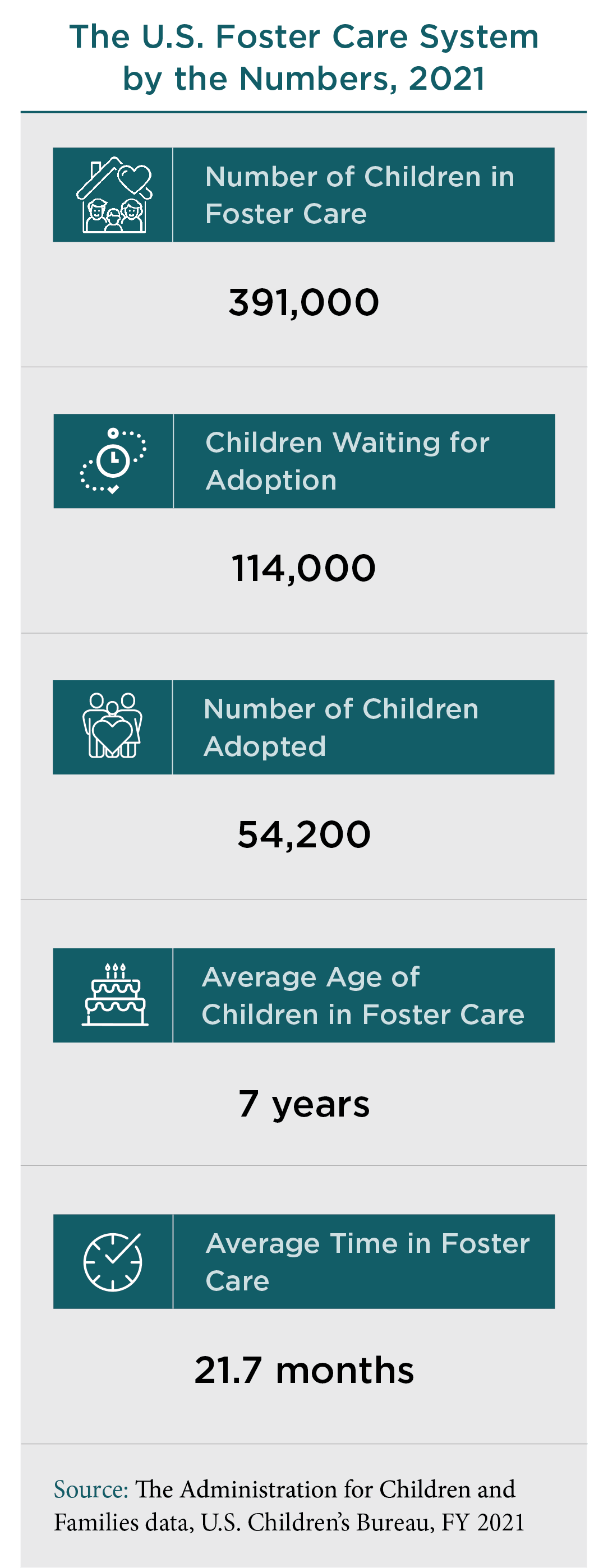Fostering Children in Midlife and Beyond
She toyed with the idea of fixing up her home and putting it on the market. Some neighbors were downsizing to a condo for retirement, and she could have moved too, to stay near them and keep them as neighbors. But then, something entirely unexpected happened that filled all the gaps in her life.
“I did not have any intention to foster,” says Sanders, an independent consultant in Raleigh, North Carolina. “It was not on my radar at all.” She had never been a parent, foster or otherwise.
But some friends had encouraged her to volunteer with a youth group. Some of the kids were from unstable family situations, and the activities provided them with a respite. “They needed me, and the people steering me to it thought I needed it too,” she says.

Immediately, she felt a sense of purpose, helping teenagers and finding out about their circumstances. In particular, she hit it off with one boy, Mark, a teen who seemed to have adult-sized burdens on his shoulders. He was staying in a temporary foster home with his younger sister, Maddie, and was also trying his best to look out for his mother, who was struggling with issues of her own.
Sanders saw quickly that this young man deserved to have some lightness and joy and a chance to act his age. On a long drive to a camp in the mountains, “he just talked my ear off,” she says. “It was unusual that he had so much fun with me, and that was noticed. That’s how this whole thing started.”
Later, the group leaders asked Sanders if she would consider taking the siblings into her home, just for a couple of weeks, to help relieve pressure at their temporary living situation. More than that, if she was willing, these weeks could be a trial run to becoming their foster parent.
“It was a new endeavor to work with youth,” Sanders says. “I have been my own person for a long time. Now, helping teens become their own person is fascinating.”
Multiple Entry Points
People don’t often think of midlife and beyond as prime parenting years. But older folks, empty nesters, and retirees have a lot to offer to kids in need. Also, many baby boomers and generation xers feel a strong desire to give back. They may have more time, patience, and resources at their disposal than in the earlier stages of their lives. The idea of channeling some of that energy to help nurture children in distress can be appealing.
Sanders agreed to the trial period. She felt herself already falling for Mark and Maddie (not their real names)—and seriously considering turning her life upside down for them. She reasoned, “I’m in my late 50s, widowed,” she says. “I have no kids. I have means—not endless means—but it’s not going to hurt me. It’ll stretch me mightily, but these are good kids, and they don’t have any good options. They were going to be split up, and I couldn’t bear it. I didn’t want them stretched.” She soon realized she would take them.
Sanders attended many Saturdays of foster training conducted by county social workers, who also visited her home and checked personal references as part of their process. Since she already had a relationship with the kids through the youth group—what social workers call a kinship—the teens were able to live with her during her training period. “I’d mostly heard about people fostering who already had kids, raised and grown, but that ain’t the only way! There is no one path to all of this,” she says.
Where to Start
The U.S. child welfare system is notoriously complicated, and there is a perennial shortage of foster families. The need is great. In 2021, there were 391,000 U.S. children in foster care, according to the Department of Health and Human Services. At year-end, 54,200 children had been adopted out of the system, and another 114,000 children were awaiting adoption.

For parents and non-parents alike, fostering later in life has both challenges and rewards, especially considering that many kids enter the system after experiencing neglect or abuse in their youngest years.
The foster process varies by state and sometimes by county. Anyone who is exploring the idea of fostering can learn about the steps required in their community by reaching out to a local foster care agency.
A directory of state and local agencies is available on childwelfare.gov, the federal Child Welfare Information Gateway. There are also national agencies, such as AdoptUSKids, Casey Family Programs, and Kidsave.
The National Foster Parent Association has resources for online education and training. Generally, to become licensed, foster parents undergo 10 to 30 hours of training and complete interviews, a home inspection, medical exams, background checks, and financial assessments.
Sanders and the kids have been together ever since, including throughout the COVID-19 lockdown, when their world shrank to only three. It sometimes feels strange to her how deeply connected they became—and how quickly—in the house she had once planned to sell. Now there are dings on the walls, but she’s in no hurry to fix them. After all, she recently became legal guardian to the siblings, so “we will be here for a while.”
Sometimes, Sanders says she wonders what her late wife would think about her life now, her new family, and her role as a foster mom to two teens. It’s not a path that the two of them would have chosen together, she is certain. Her wife had a child already, one who is now a 32-year-old adult. “She’d been there, done that,” says Sanders. “This is my adventure, but I think she had a hand in it. I think she’s laughing.”
How would her wife have responded to the two teens? “I think she sent them,” Sanders says.